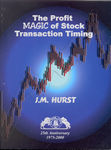|
Subscriber Sections The
Anals MoGauge © Subscription Help (Login, Password etc.) Free Forums Resources Market Stats and Kitco Thumbnail Charts Bear
Essentials Marketviews with Ike Iossif Prudentbear.com
Humor Wall Street Follies Financial Funnies Hilarious! by stoolie prolerbear Not
In My Backyard for Capitalstool. Support the Stool! |

We
don't know and neither do they.
An Ill Wind
(11/11/00) StepanN. Stool, PH&D
There are two problems with many
analysts today. Either,
A. They are paid to be bullish, or
B. They've been around since 1975, or less, and have never experienced
a bear market.
As a result, well meaning though we may be, we waste too much time searching the horizon for "bottoms" and misidentifying bear market reaction rallies, as long side trading opportunities.
Vertical spike rallies are typical of great bear markets. They are the stakes in the heart to bulls. Who among us is nimble enough to catch the low, then get out of the way before the abrupt onset of the next downleg?
As technicians, we must not only be good chart readers, but we must be good historians. It behooves us to understand the context in which we read our charts.
For those of us who cut our investment teeth in the late sixties and early seventies, that's not too hard. We remember and relive the feelings of anger, crushed hopes, and despair. We remember that growth stocks can, in fact, stop growing, and can, in fact, sell at 10 times earnings.
Great bear markets come no more than three times per century. They are preceded by historic bubbles, just like the one we just saw. Perhaps we can't remember another one like this, but if we've studied history, we see striking similarities to the 1926-29 market which preceded the Great Depression.
To read our charts correctly, I believe that we must recognize that the decades long technology capital formation boom has come to an end, that there is enormous overcapacity that can't be used, and can't be paid for, and that the bubble we saw was the precursor to a great bear market, one which could drag on for years. Resistance will become an impenetrable wall, support - merely the signpost for downside gaps.
It's time to stop looking for bottoms. It's time to get on our boards and ride the wave down. An ill wind is blowing.
|
Click symbol or name for expanded quote page
StoolMart NEW NAME, SAME GREAT PRODUCTS!
|



